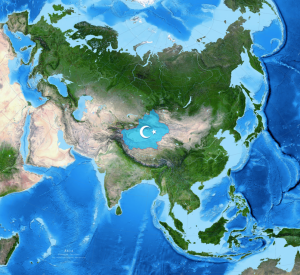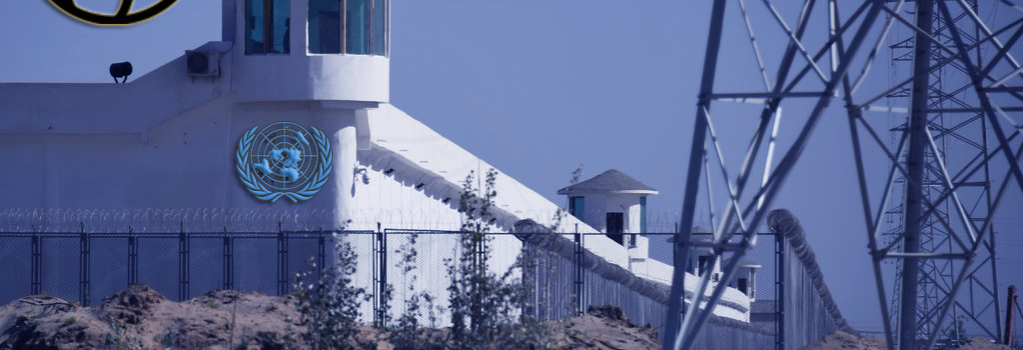The decision came after allegations, which the bank could not substantiate, that its money was being used to fund Muslim internment camps.
WASHINGTON — The World Bank said on Monday that it would scale back development work in China’s Xinjiang region after speculation that a $50 million loan it granted in 2015 for an education project was being used to fund Muslim detention camps.
The bank has been conducting a review of the project since Senator Marco Rubio, Republican of Florida, and Representative Jim McGovern, Democrat of Massachusetts, expressed concern about it in August and after an independent researcher found evidence suggesting that funds were being used to buy police batons and tear gas launchers.
 The Chinese government has been facing criticism for detaining more than a million Muslim Uighurs and placing them in “re-education” camps where they are forced to renounce their religious beliefs and embrace the ideology of the Communist Party.
The Chinese government has been facing criticism for detaining more than a million Muslim Uighurs and placing them in “re-education” camps where they are forced to renounce their religious beliefs and embrace the ideology of the Communist Party.
The bank said it had conducted an extensive review of the project and was not able to substantiate the allegations. However, the bank acknowledged the challenge of rigorously monitoring the situation and said it was making changes to the project.
The loan was intended to support five vocational schools in the region by upgrading teams of teachers and curriculums. Some of this money was going to “partner schools” that were indirectly receiving World Bank funding and were not under the bank’s supervision.
“In light of the risks associated with the partner schools, which are widely dispersed and difficult to monitor, the scope and footprint of the project is being reduced,” the bank said in a statement. “Specifically, the project component that involves the partner schools in Xinjiang is being closed.”
The bank said it was also increasing its supervision of the project, which is supposed to continue through next year, by assigning a staff member from Washington to jointly head it and bringing on a senior manager from the bank to participate in site visits.
The situation was one of the first leadership tests for David Malpass, the former Treasury Department official who took over as the World Bank’s president this year.
The Trump administration has stayed largely quiet on China’s human rights record while the two countries have been locked in trade negotiations for more than a year. In recent months, however, officials have shown more willingness to pressure China on the matter.Last month, the Trump administration imposed some commercial restrictions on Chinese technology companies and other organizations believed to be involved in the repression, and said it would impose a visa ban on officials thought to be responsible for human rights abuses.
Also in October, Vice President Mike Pence criticized China’s record on human rights in a speech last month, scolding American companies that do business there and censor their employees from speaking about repressive tactics. Secretary of State Mike Pompeo compared the “abusing” of Uighurs to the surveillance state depicted in George Orwell’s book “1984.”
 Mr. Malpass has already made clear that he wants to scale back the bank’s lending to China given the size of its economy. In 2017, the bank lent $2.42 billion to China. This year, the total is expected to fall to $1.33 billion.
Mr. Malpass has already made clear that he wants to scale back the bank’s lending to China given the size of its economy. In 2017, the bank lent $2.42 billion to China. This year, the total is expected to fall to $1.33 billion.
The decision is likely to further rankle Beijing. The Chinese government has taken offense to criticism from the United States about Xinjiang and defended its practices there as counterterrorism measures.
“China demands that the U.S. immediately discard its double standards in terrorism, and stop using Xinjiang as a pretext to interfere in China’s internal affairs,” Geng Shuang, a spokesman for China’s Ministry of Foreign Affairs, said last week.
Source: nytimes.com
Since initiating market reforms in 1978, China has shifted from a centrally-planned to a more market-based economy and has experienced rapid economic and social development. GDP growth has averaged nearly 10% a year—the fastest sustained expansion by a major economy in history—and more than 850 million people have lifted themselves out of poverty. China reached all the Millennium Development Goals (MDGs) by 2015 and made a major contribution to the achievement of the MDGs globally. Although China’s GDP growth has gradually slowed since 2012, as needed for a transition to more balanced and sustainable growth, it is still relatively high by current global standards.
With a population of 1.4 billion, China is the world’s second largest economy. It has contributed around 30% of global growth in the past eight years.
Although China has made impressive economic and social development gains, its market reforms are incomplete, and its per capita income remains that of a developing country and only about a quarter of the average for high-income countries. The country is on track to eliminate absolute poverty by 2020 according to China’s current poverty standard (per capita rural net income of RMB 2,300 per year in 2010 constant prices). However, there are still an estimated 372.8 million people below the “upper middle income” international poverty line of $5.50 a day.
Rapid economic ascendance has brought on many challenges as well, including high inequality (especially between rural and urban areas), challenges to environmental sustainability, and external imbalances. China also faces demographic pressures related to an aging population and internal labor migration.
China’s rapid economic growth exceeded the pace of institutional development, and there are important institutional and reform gaps that it needs to address to ensure a sustainable growth path. Significant policy adjustments are required for China’s growth to be sustainable. Managing structural reforms and related risks will not be straightforward given the complexity, size, and global importance of China’s economy.
China’s 13th Five-Year Plan (2016-2020) addresses these issues. It highlights the development of services and measures to address environmental and social imbalances, setting targets to reduce pollution, to increase energy efficiency, to improve access to education and
healthcare, and to expand social protection. The 13th Five-Year Plan’s annual growth target is 6.5%, reflecting the rebalancing of the economy and the focus on the quality of growth while maintaining the objective of achieving a “moderately prosperous society” by 2020 (doubling GDP for 2010-2020).
Last Updated: Oct 01, 2019
Source: worldbank.org

Leave a Reply